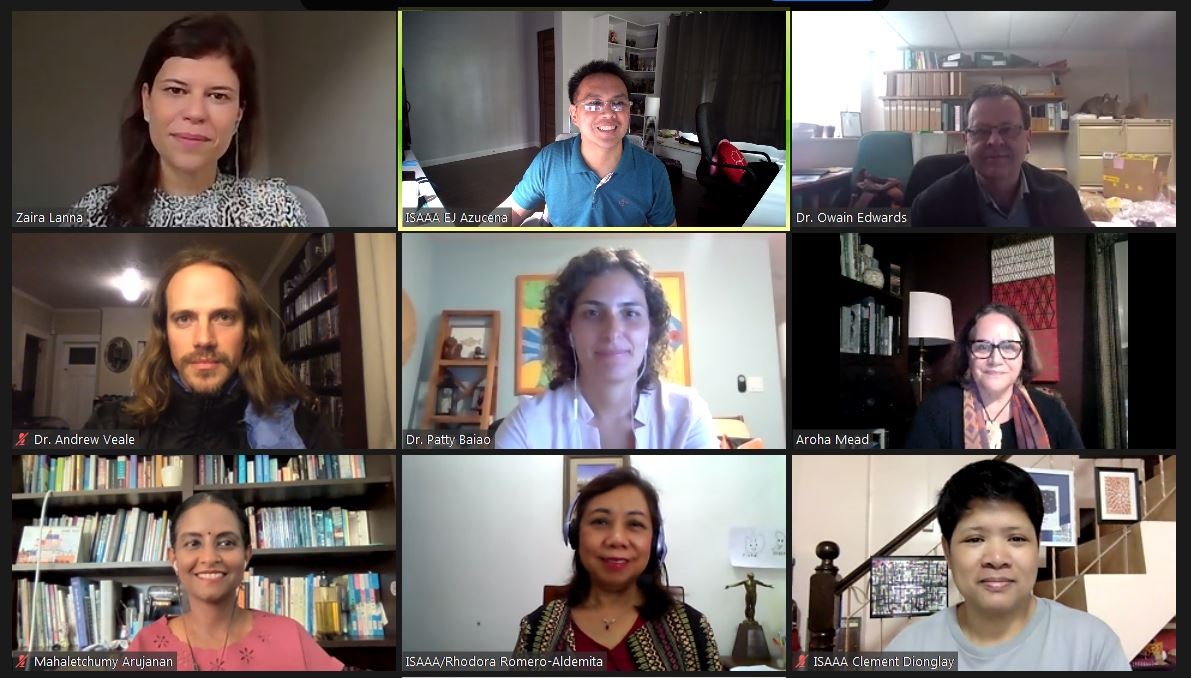
Experts Explain How Gene Drives Control Invasive Species
July 1, 2021| |
Gene drive strategies can help mitigate the threats caused by invasive species, particularly mammals and insects, and help address the environmental damages they made as well as their impacts on the community in that environment. This is according to the ISAAA webinar titled Could gene drive approaches be used to protect nature and recover biodiversity loss? held on June 24, 2021, via Zoom.
The webinar was the second session of the Gene Drive Webinar Series co-organized with the Biotechnology Information Centers and the Outreach Network for Gene Drive Research.
Dr. Patty Baiao, US Head of Operations of Island Conservation, explained how invasive species establish and overrule native species then modify the structure and species compositions of island ecosystems. It costs billions of dollars to manage and keep them at a population level that can be controlled. Fortunately, gene drives are effective in invasive species control in islands with an 85% success rate of eradicating them resulting in the quick recovery of the native ecosystem. Dr. Baiao emphasized the need for innovation and breaking the incrementalism barrier so that more islands with invasive species can be reached and their biodiversity would be protected.
Dr. Owain Edwards of the Commonwealth Scientific and Industrial Research Organisation (CSIRO) said that the homing gene drive mechanism is effective in mosquitoes, while the X-chromosome Shredder is being developed to make gene drives work for vertebrates. He highlighted that gene drive is a promising, permanent, and humane solution for certain target invasive species and if properly designed, should have no direct effects on non-targets.
Dr. Andrew Veale of the Manaaki Whenua Landcare Research discussed the usefulness and limitations of gene drive approaches by citing Predator Free 2050 Vision, a project that aims to remove invasive species of rats, possums, and stoats in New Zealand. The country's current methods to control their populations rely on toxins, but the toxins can be passed on to non-target species. Dr. Veale explained that gene drives can provide a toxin-free alternative because the approach is highly species-specific. Gene drive challenges such as the potential resistance of the target species, species interactions, extinction of species, and recolonization dynamics, can all be addressed through proper design and mitigation measures, he added.
Social acceptability is also a common challenge when it comes to gene drives. All three experts agreed that it is important to engage the public before and during the implementation of gene drives.
The webinar was opened by ISAAA SEAsiaCenter Director Dr. Rhodora Romero-Aldemita and moderated by Dr. Aroha Mead of Bioprotection Aotearoa (Centre of Research Excellence) and Biological Heritage National Science Challenge. ISAAA Global Coordinator Dr. Mahaletchumy Arujanan gave the closing remarks.
Watch the full session on ISAAA's YouTube channel. The next session of the Gene Drive Webinar Series titled Can gene drive eliminate vector-borne diseases? is scheduled for July 8, 2021. Register now.
Subscribe to Outreach Network for Gene Drive Research Newsletter to learn more about the technology.
| |
You might also like:
- What is Gene Drive?
- Harmonized Regulations Key to Optimizing the Potential and Benefits of Gene Drive Technology
- Scientists Develop Gene-Edited Mosquito to Help Eliminate Malaria
Biotech Updates is a weekly newsletter of ISAAA, a not-for-profit organization. It is distributed for free to over 22,000 subscribers worldwide to inform them about the key developments in biosciences, especially in biotechnology. Your support will help us in our mission to feed the world with knowledge. You can help by donating as little as $10.
-
See more articles:
-
News from Around the World
- Experts Explain How Gene Drives Control Invasive Species
- Philippine Media Use Less Fear Appeal as More Farmers Adopt Biotech Maize
- Can Gene Drive Eliminate Vector-borne Diseases?
- PennState Scientists Identify Sorghum Genes for Resistance to Anthracnose Leaf Blight
- EU Report Confirms Glyphosate Doesn't Cause Cancer
- Rutgers Study Sheds Light on Evolution of Photosynthesis
- Study Finds Barley Protein Could Help Boost Its Yield in High Temperatures
-
Plant
- UK's First CRISPR Field Trials Show Potential of Gene Editing
- Customizable Molecular Scissors for Tailoring Plant Genomes
- UC San Diego Scientists Develop First CRISPR-Cas9-based Gene Drive in Plants
- APEC Members Discuss Genome Editing Technology and Policy Strategies
- Simultaneous Editing of Susceptibility Genes in Rice Leads to Disease Resistance
-
Read the latest: - Biotech Updates (December 17, 2025)
- Gene Editing Supplement (December 17, 2025)
- Gene Drive Supplement (February 22, 2023)
-
Subscribe to BU: - Share
- Tweet

